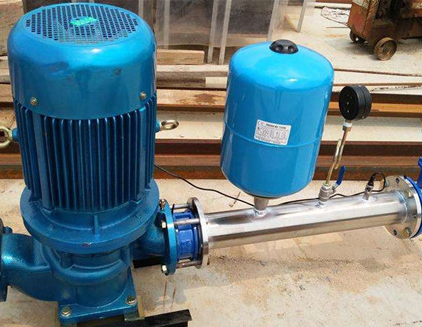Centrifugal pump pipeline cleaning and maintenance
The cleaning and maintenance of the pipeline of the centrifugal pump is an important part to ensure its efficient and stable operation. The following two aspects are elaborated in detail:
I. Pipe cleaning
1. Cleaning debris in the pipeline
Purpose: Ensure that the pipeline is unobstructed and prevent the flow reduction or pump damage caused by debris blockage.
Method: For debris such as hemp rope, sand, and gravel in the pipeline, it can be cleaned by vacuum cleaners, cleaning machines and other equipment. These equipment can effectively remove impurities in the pipeline and restore the normal flow capacity of the pipeline.
2. Install baffles
Purpose: For unreasonable pipeline design or dead corners, install baffles to optimize the water flow rate and reduce the precipitation of dirt in the pipeline.
Implementation: Install baffles at appropriate positions in the pipeline to form vortices or accelerate the flow of water when passing through, thereby preventing dirt from accumulating in the pipeline.
3. Repair the inner wall of the pipeline
Purpose: Prevent the accumulation of dirt caused by cracks or damage to the inner wall of the pipeline.
Method: Check the inner wall of the pipeline and repair it in time when cracks or damage are found. The repair material should be selected to match the material of the pipeline to ensure that the repaired pipeline has good durability and sealing.
4. Add a filter
Purpose: Add a filter at the inlet of the centrifugal pump to prevent impurities from entering the pump and causing blockage.
Implementation: According to the actual needs of the centrifugal pump and the pipeline conditions, select the appropriate filter type and specification for installation. The filter should be cleaned or replaced regularly to ensure its filtering effect.
2. Pipeline maintenance
1. Check the looseness
Regularly check the looseness of the pump, pipeline and joints. Turn the pump body by hand to check whether it is flexible to determine whether there is looseness or wear. Problems found should be dealt with in a timely manner to avoid the expansion of the problem and cause more serious consequences.
2. Control flow and head
When the centrifugal pump is operating normally, its flow and head should be controlled within the range shown on the sign. This helps to ensure that the pump operates at the high efficiency point, improve energy saving, and extend the service life of the pump.
3. Monitor bearing temperature
Check the bearing temperature regularly to ensure that it does not exceed the specified range (generally ambient temperature + 35℃, and not more than 80℃). If the bearing temperature is found to be too high, the machine should be stopped immediately to check the cause and take corresponding cooling measures.
4. Lubricating oil management
Add an appropriate amount of bearing lubricating oil to the bearing body, and check the oil level and oil quality regularly. The oil level should be kept near the center line of the oil mark, and the lubricating oil should be replaced or replenished in time to ensure its lubrication effect.
5. Prevent freezing cracks
When using centrifugal pumps in cold seasons, care should be taken to prevent freezing cracks in the pipeline and pump body. The medium in the pipeline can be drained after shutdown, and insulation measures should be taken on the outside of the pump body.

6. Regular cleaning and maintenance
Clean and maintain the centrifugal pump and its pipeline regularly to remove accumulated dirt and impurities. This helps to maintain the cleanliness and good operating condition of the pump body and reduce the possibility of failure.




